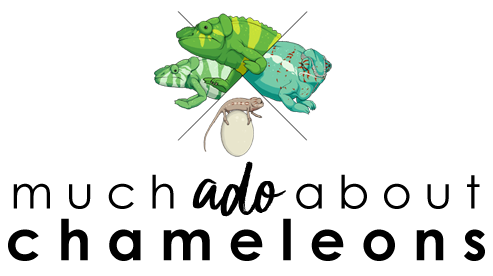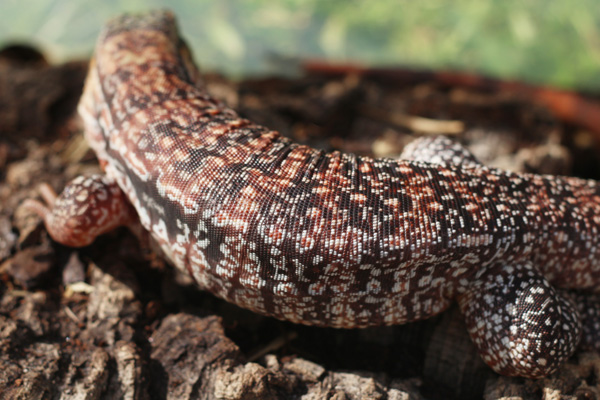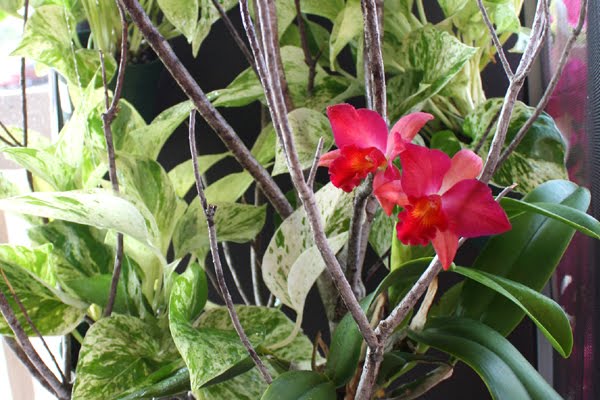This is the first in a multi-part opinion series on Ethical Reptile Keeping. The series seeks to urge keepers, new and old alike, to evaluate their own husbandry habits and to think about the impact their choices, from housing to breeding, have on their personal animals as well as on the herpetology hobby as a whole. While some aspects of reptile and amphibian keeping have evolved to focus on pushing and advancing husbandry techniques to ensure that a species thrives in captivity, others have become stuck in antiquated and short-sighted practices which do not promote progress. And certain species, particularly entry-level species, are suffering as a result. I wish to draw attention to these embarrassing aspects of the herp community and encourage people to take a look at how they can grow as hobbyists and keepers, push what we know about great husbandry together, and strive for excellence, personally and as a community.
"Reptile Keeping: 9 Signs You're Doing It Wrong!"
I'm going to go into some of the points he makes, and why I wholeheartedly agree with him. I think the most striking statement is that most people cannot recognize the difference between an animal surviving vs. an animal thriving. Thriving. This is what we should be striving for if we're going to take on the responsibility of keeping any sort of pet in captivity, and if we're not, then we shouldn't be keeping these animals at all. It just seems to obvious, but somewhere in the miasma of information online, Youtube video tutorials, and forum ramblings, it seems that people miss the mark. |
Reptile keeping becomes more about minimalist, efficient housing and "collecting" and less about striving to build a good, enriching environment for a pet that could live 15 years or more. There's always one more morph to purchase, there's always one more way to streamline their housing, there's always one more way to get around taking the time to do things properly, they way they should be done. But lead by the example of large-scale American breeders that, as Sean says, "stack ’em high, & rack ’em wide!" even new keepers, with only a handful of animals, feel compelled to live up to that example. Suddenly the 4-5 pet leopard geckos they have which could very comfortably live in 10-20 gallon terrariums with enriching decor end up stacked in cheap plastic totes. And to make matters fundamentally worse, they tout this minimization as "better for their health!"
Let's stick to the leopard gecko example for a while, which is the one that grinds my teeth the most, although many species suffer the same injustice. Here is an burrow-dwelling animal, an animal that would dig out nooks and tunnels in the sandy soil of their native Middle East home and spend its evenings climbing and hunting among the rocky terrain. Curious, active, and an intelligent little creature. And in captivity we put them in a shallow plastic tote, with a paper towel, a moist hide with maybe a little soil in it if we're feeling generous, a feeding bowl (for their 100% mealworm diet) and a separate bowl for calcium supplements. Are we serious? Is this really the best environment we can provide as reptile lovers? This is purely and simply a symptom of laziness, a symptom of wanting to acquire as many of these animals as we can fit on a rack system and offer them the absolute minimum needed to survive. And then have the audacity to claim that they are happier this way, because too much space will stress them out! Because they like living in a dark, condensed space with zero external stimuli! Frankly, I call that out as nonsense.
 |
| The top two photos show a tropical African fat-tailed gecko cage that housed a group of three females. The bottom cage was for a Standing's day gecko. |
 |
| A drier forest-theme gecko for a different colony of African fat-tailed geckos. |
Thrive, thrive, thrive. To be happy, healthy (physically as well as mentally), and well-adjusted for the entire duration of their lives. If that's not the goal, then why do we even bother?
There is a happy medium that lays somewhere between the minimalist approach and the completely naturalistic approach that works for each individual keeper, the trick is to find it.
Do not take on more animals than you can properly and responsibly house and care for.
Do not take on so many animals that you have to cut corners in their care or downgrade their housing so they all fit.
Do not take on more animals just for the sake of having more animals.
Do not get caught up in the "collecting."
Do not get caught up in trying to be like the Big Breeders. It's OK to just have pets and enjoy them for the sake of having them.
Do not follow the advice of anyone that says that animals as "just as happy" or "healthier" in a barren, minimalist set-up.
Do not be one more "reptile mill" keeper.
Do not let anyone tell you that it's too expensive or too complicated to do things correctly. Trust me, it's not! You can do this! And you will be prouder for it.
Much ado about happy, healthy pets. Chameleons or otherwise.















All of this made me laugh. What is so tropical about africa? Leopard geckos are desert dwellers, not tropical. They need dry humid environments. Not a tropic rain forest.
ReplyDeleteYou're joking, right? A pretty significant portion of Africa is tropical rain forest, which is why so many species originating from Africa need humid environments. Africa is a pretty large continent, there are all types of environments, even frigid, snowy mountain-tops.
DeleteLeopard geckos are from the Middle East, which true, is dryer than the environment of AFT geckos. None of the enclosures I illustrate here are for leopard geckos, but if I were to have any pictured here they would look about the same but dryer; instead of soil I would probably use a mixture of clay and sand, planted with drought-resistant vegetation, and obstacles like rocks and logs. I could use soil because soil has the capacity to be bone dry or soaking wet, so it is fine for either, honestly.
It takes only a few minutes to do research on the environment your specific pet reptile comes from and take inspiration from that to design your enclosure. I would learn at least what continent my species comes from before laughing.
Thank you for the fantastic blog, it is a great reference for caring for my veiled chameleon! Your pieces are just packed with factual information, but also with a love of keeping reptiles to the best, most natural way they can live (thrive!) in our home. Thank you again for this great service!
ReplyDeleteI also have a personal question for you regarding your leopard geckos. I am interested in keeping one and have been doing months of research. Unfortunately, the "paper towel and a hide or two" happens a lot and pollutes my research. My main question though, is how you clean your beautiful tank? Do you simply replace your substrate and replant the plants you have once a month (or sooner)?
Thank you again!
-Kodey
Hi Kodey,
DeleteThank you so much for the kind words about the blog! That’s definitely something I try to emphasize, after all, you have these awesome little wild animals living at home, part of the fun should be to work on their enclosures and watch them do what they do best in an interesting home for them. It doesn’t have to be fully planted and self-sustaining, but an enclosure should be a little more than just the basics.
I have always found that my geckos tend to pick a corner to use as the restroom corner, so I will scoop out that corner weekly or more as a “spot clean.” In my tanks I’ve never gone as far as what you see in dart frog terrariums (with drainage layers, clay balls, etc.) but I did have earthworms and little crawlies like that as my cleanup crew, and then periodically I would redo the tank and it would give me a chance to rearrange it. Mostly I’ve used big bags of “organic” soil (the kind that doesn’t have fertilizers or perlite, it’s usually about $3-5 for a large bag) so it’s not cost-prohibitive to swap it all out. The worms usually come included! Lol If you only have a 20 gal cage a big bag like this could last you months, I’ve gotten them from Home Depot or Lowe’s. And any branches/logs I used I basically cut down from trees myself, but you can usually find cork rolls/flats and grapewood at any reptile convention or specialty store.
If you wanted to keep things easy you can keep the plants in their pots, that way you never ruin any roots when you’re moving things around and it's easier to remove everything and dump out everything.
This comment has been removed by the author.
ReplyDeleteYour blog is absolutely wonderful, I love your aesthetic for it and all the information it's provided for me and my recently adopted veiled chameleon girl (who's my first chameleon I've ever had). I absolutely agree with everything outlined in all the ethical posts you've made, and I think it's very important to give one's reptiles a nice, stimulating environment. I have a yellow-belly slider turtle and a bearded dragon as well, and I am infuriated when people recommend against giving them things that they'd enjoy in nature because it's just too much effort to be bothered to actually treat them like family.
ReplyDeleteMy girlfriend and I absolutely hate people who run 'reptile mills', because industrializing animals is just wrong and animals always suffer when they become part of a 'business' rather than just a hobby. My girlfriend really wants an axanthic ball python, but with ball pythons it's so bad it's considered preferred to keep them in an opaque tub on a paper towel with no light and an overturned food container with a hole in it for a hide. I don't know how much you know about snakes but so many people who claim to 'love' them dare to say they're perfectly happy this way and would be stressed out in a large space with, you know, actual things to do than just sit there in one spot all day, everyday. Forever.
I'm so sorry for ranting, but it's just an agitating issue for me as a reptile lover. Especially because it makes adopting things like color-morphs of the species that are victims of the reptile mills impossible to do ethically, cause your chances of getting the ones you want outside of buying them from someone who doesn't care about them enough to give them quality of life are slim to none. My girlfriend so badly wants an axanthic ball python but we absolutely don't want to support anyone's reptile mill.
I love reptiles, but damn am I disappointed and disgusted by the large portion of the community that collects and treats them like objects. Thankyou so much for sharing your feelings on this matter, it's always wonderful to see other people that share the same anger towards these things. Makes one feel not so alone in their stance on these issues.
Thank you for your thoughts! I’m glad others agree as well. I’m definitely familiar with ball pythons and I think they and the beginner geckos (like leopard geckos) get it the worst. For some reason new keepers look up to the mega breeders with hundreds of animals in a room and strive to do the same thing (“collect”), instead of looking up to the people that have maybe a handful of pet snakes and keep them properly and with consideration, in bigger cages with branches and hides and things to explore every night. And since these species are so easy and resilient, they unfortunately tolerate this kind of minimal housing better than other species. You’d never be able to get away with that with chameleons, for example.
DeleteI’ve kept a couple snakes very briefly (a ball and a young red-tail boa) and they had 65 gallon aquariums to live in, with branches, cork hides, substrate to dig into, a couple resilient pothos plants (that always ended up smooshed), and large water bowls and those snakes were active as could be at night. Even the ball, which some people like to think would die from the stress of having a large enclosure! And I’ve never worked at an animal center or zoo that didn’t keep all snakes in large display enclosures, even ball pythons, and those snakes did super well.
I think that if a snake is scared in a large enclosure it’s because A. maybe it’s a shock if they’ve only ever known a tub and B. because the cage may not be set up properly, with enough cover so that they still feel safe and hidden if they want to be. But a snake in a good set-up is going to thrive, in my experience!
I commend you guys for wanting to rescue a snake. I don’t know any snake rescues but perhaps keep an eye out on your local Craigslist, here in Miami mine is full of unwanted reptiles that people get and then regret.
Love love LOVE! I need reminders like this article far more often. Although I study captive reptile husbandry, it's so easy to start to give in to the people who clamor for minimalist practices. Now I'm making a list of the improvements I'd like to make to each of my reptile's enclosures this year. <3
ReplyDeleteGood for you Mariah! It's so easy, like you said, to get caught up in what everyone else seems to be doing. Granted, it's easy, cheap, and lets you have a lot more pets! But I'm glad that *slooowly* the bioactive movement seems to be getting some traction, so maybe in a few years we will see more keepers keeping their animals a little more naturalistically. We don't necessarily have to go all out, but at least try a little harder than the absolute bare minimum!
DeleteLove this! I'm a big fan of the naturalistic approach. What's your opinion on the danger of eating substrate? That's the usual argument I see for the paper-towel-only approach, that if you have any substrate accessible a lizard will eat it and possibly become impacted. Is that just nonsense, or a risk that's there but minor compared to the quality-of-life benefits, or are certain substrates dangerous for certain species? If there are risks, are there ways to minimise them?
ReplyDeleteThis comment has been removed by the author.
ReplyDeleteThank you for such a well written article. Your points are all well researched and factual. We need to move past how breeders care for their animals and how we, the 99.75% of enthusiasts are and should be keeping these amazing pets.
ReplyDelete
ReplyDeleteเกมออนไลน์ live22โบนัส100 slot online คลิกเลย
https://www.live22easy.com/